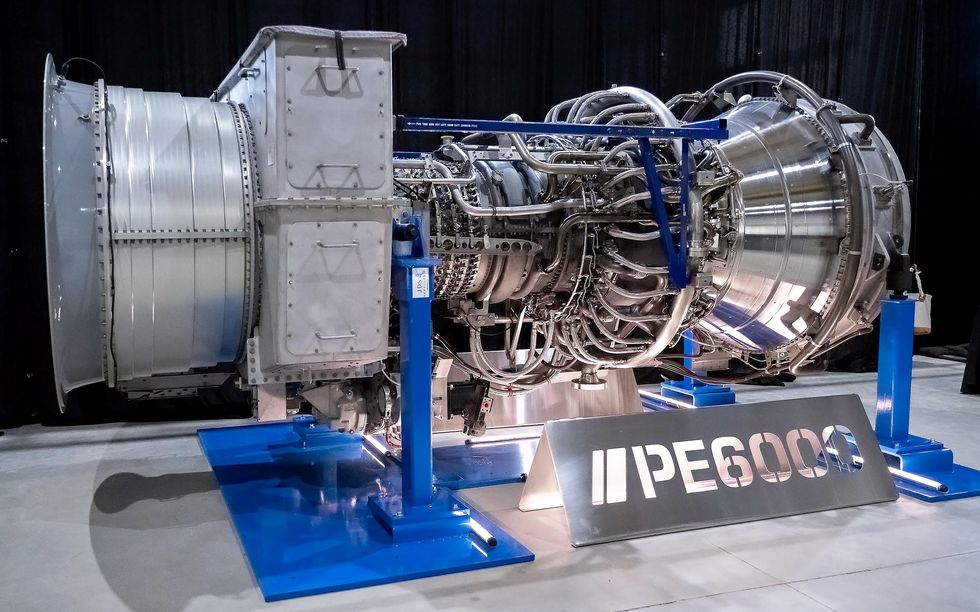
Data center developers are exploring innovative solutions to address a significant power bottleneck as they expand their facilities to harness the growing potential of generative AI. Traditional approaches, such as connecting to the electrical grid or constructing onsite power plants, have encountered substantial delays. At the Data Center World Power show in San Antonio in October 2025, natural-gas power provider ProEnergy introduced an alternative method: repurposed aviation engines.
According to Landon Tessmer, Vice President of Commercial Operations at ProEnergy, several data centers are utilizing the company’s PE6000 gas turbines to supply the necessary power during construction and for the initial years of operation. Once grid power becomes available, these turbines can either serve as backup sources, augment the grid supply, or be sold to local utilities. Tessmer noted, “We have sold 21 gas turbines for two data-center projects amounting to more than 1 gigawatt (GW), which are expected to provide bridging power for five to seven years.”
Innovative Power Solutions for Data Centers
The use of repurposed aviation engines is not entirely new. Gas-turbine original equipment manufacturers (OEMs), such as GE Vernova and Siemens Energy, have historically adapted successful aircraft engines for stationary electric-power generation, known as aeroderivative gas turbines. These turbines are lighter, smaller, and more easily maintained compared to traditional heavy-frame gas turbines.
Mark Axford, President of Axford Turbine Consultants, emphasized the complexity involved in converting an aviation engine for power generation. For instance, the GE Vernova LM6000 gas turbine, derived from the widely used CF6-80C2 turbofan engine, underwent significant modifications to enhance its capability for electricity generation. Adjustments included expanding the turbine section, adding structural supports, and implementing new control systems to optimize performance and reduce emissions.
As demand for gas turbines surges, the supply chain is struggling to keep pace. Paul Browning, CEO of Generative Power Solutions, pointed out that the waiting list for ordering popular models can extend from three to five years. In contrast, ProEnergy’s PE6000 can be delivered by 2027, making it an attractive option for data centers facing immediate power needs.
Repurposed Engines Transforming Energy Generation
ProEnergy specializes in refurbishing retired CF6-80C2 engine cores, pairing them with newly manufactured components. These refurbished engines are capable of producing 48 megawatts (MW), sufficient to power a small-to-medium-sized data center or approximately 20,000 to 40,000 households. Tessmer anticipates that around 1,000 of these aircraft engines will be retired over the next decade, ensuring a steady supply of resources for this innovative power solution.
The PE6000 turbines have also adjusted their operational focus; originally designed for utility peak demand, they are now essential for entire data center operations. These engines can run on natural gas and become operational within five minutes. If maintenance is required, a spare can be swapped in within 72 hours. Their emissions levels average 2.5 parts per million for nitrogen oxides, significantly lower than EPA-regulated thresholds.
ProEnergy has already fabricated 75 PE6000 packages since 2020, with another 52 units currently being assembled or on order. The growing reliance on this technology can be attributed to several factors, including the lengthy grid-connection delays many data centers face. Tessmer highlighted the bureaucratic hurdles involved, stating that permitting issues can lead to delays of eight to ten years.
As the demand for data centers continues to rise, and grid connection times remain lengthy, the role of aeroderivative gas turbines as a bridging technology becomes increasingly vital. This innovation may prove crucial in facilitating the rapid development of AI infrastructure and addressing ongoing energy challenges.






